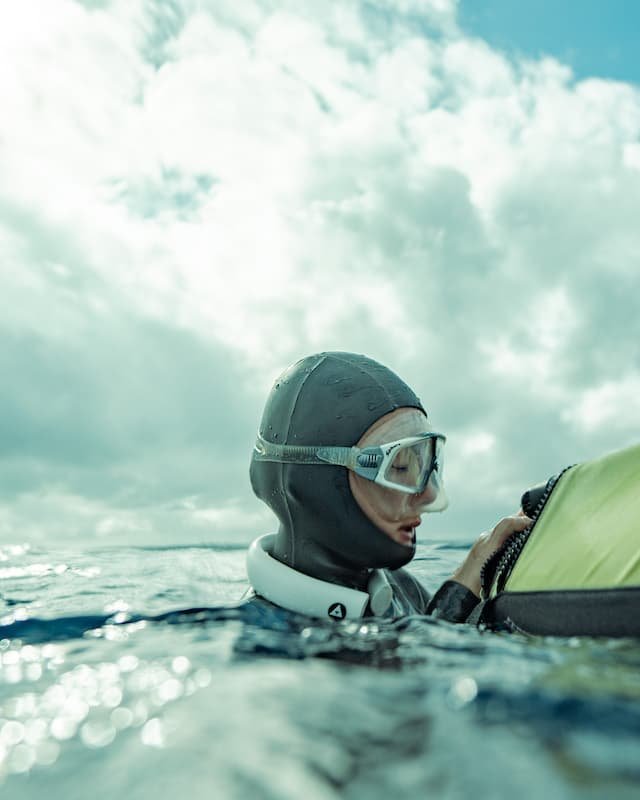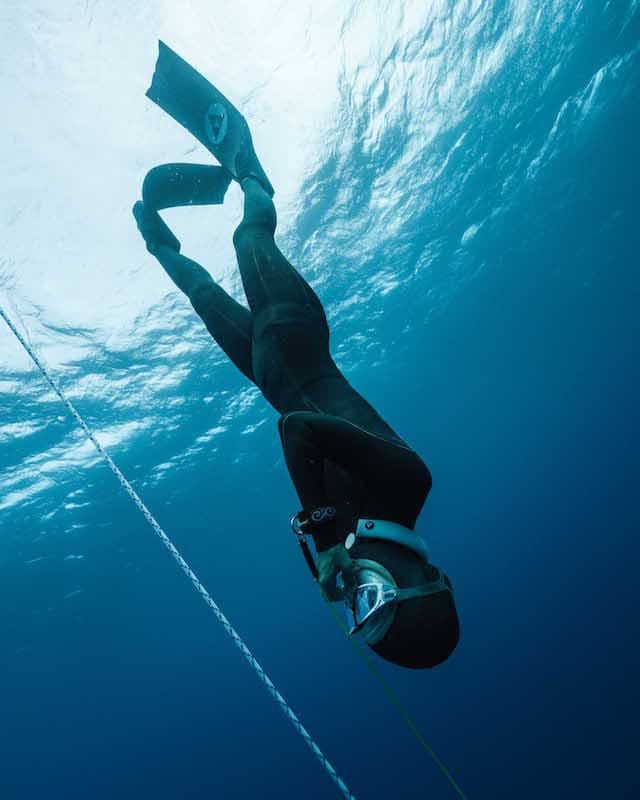
 Nick Pelios
Freediver, Creator
Nick Pelios
Freediver, Creator

 Nick Pelios
Freediver, Creator
Nick Pelios
Freediver, Creator
Feeling inundated by the multitude of resources on freediving techniques? It's understandable to feel overwhelmed by the sheer amount of information available on the topic. However, fear not! We have compiled a list of three tips that can assist you in improving your freediving skills rapidly.
Relaxation is an essential aspect of freediving, and it is not without reason that it is the most frequently mentioned term in the sport. Tense and forced dives can be extremely hazardous and even life-threatening. Thus, it is crucial to relax your mind and body before attempting a dive. Practicing relaxation techniques on land, such as body scans, visualizations, meditation, and breathing exercises, can be helpful in achieving a state of calmness and tranquility.
Repetition is the key to mastering relaxation in freediving. By practicing regularly, your brain becomes more comfortable and familiar with various situations and scenarios, allowing you to respond appropriately in real-time dives. You can mentally visualize and solve problems or issues that may arise during a dive, which will equip you with the necessary skills to handle such situations in reality.
During a dive, it is essential to check for any tension or discomfort in your body. By performing body scans, you can easily identify areas of tension and release them to achieve a relaxed state. An easy exercise for practicing relaxation is to do free immersion dives, going down slowly, performing a body scan and stopping whenever you feel tense. Release the tension and then return to the surface. Repeat this exercise several times until you feel more comfortable, and then continue your descent. By mastering relaxation techniques, you can enjoy the beauty of the underwater world while keeping yourself safe.

Maintaining proper body position is just as important as relaxation while diving on the line. Facing the line at all times, it's essential to maintain a relaxed and rounded shoulder posture while tucking your chin and avoiding looking up or down. It's also vital to tuck your hips in, relax your legs (or maintain a steady kicking rhythm without overexerting), release any tension in your belly, back, and neck, and soften your facial muscles when equalizing your ears.
Achieving a straight position in front of the line requires practice and focus on individual parts of the body before combining them into a synchronized motion. With persistence and repetition, you will eventually master the techniques required to maintain an optimal body position during a dive on the line.

When it comes to using bifins for freediving, you've likely heard the popular adage, "Do not bend your knees while kicking." However, the reality is that there will always be some degree of knee bending involved in your kick. The idea behind keeping your legs straight is to utilize the quadriceps, the largest muscle in the legs. Recent studies have shown that there is no one-size-fits-all approach to executing an efficient kick. The amount of knee bending will depend on factors such as your anatomy, muscle strength, and fin stiffness.
Your descent can offer hints as to what you need to correct in your kicking technique. For example, if you find yourself spiraling downwards, it could indicate that one leg is kicking harder than the other. To address this, focus on consciously balancing your kicks. If you're getting closer or further away from the line, your forward or backward kick may have more amplitude, so training to maintain even kicks is crucial. Another tip is to use your hip as if you were kicking a ball, moving them back and forth as you kick.
On the other hand, using a monofin is an entirely different technique that requires extensive training and strengthening of the lower back and abdominal muscles. The movement has to originate from the hip, abs, and lower back, moving both legs simultaneously and with equal force. As a challenging technique, attending a special workshop for this technique is highly recommended. It's also essential to have good equalization performance, as freediving with a monofin entails a quicker descent than with bifins.
Furthermore, filming your dives is an excellent tool for improving your kicking technique, regardless of whether you're using bifins or a monofin. By analyzing your footage, you can identify areas for improvement and fine-tune your technique accordingly.